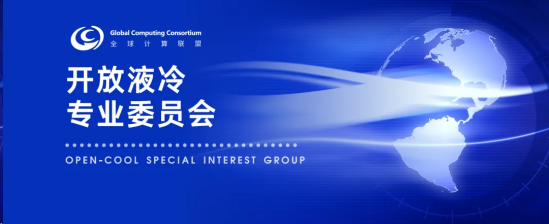

News
The Second Session of the First Council Conference of the Global Computing Consortium (GCC) in July 2024 considered and approved the application for establishing the Open-Cool Special Interest Group, which was jointly brought up by China's three tier-1 telecom carriers — China Mobile, China Telecom, and China Unicom — alongside Huawei, xFusion, and several other enterprises covering chipsets, components, and servers in the computing and liquid cooling sector, as well as think tanks and other research institutions. The decision was followed the ongoing efforts to prepare for the group's formation and convene its first plenary meeting.

Reducing carbon emissions has emerged as a global priority. China has proposed a complete set of initiatives, including carbon peaking and neutrality, and introduced a number of policies to promote the energy saving and carbon emission reduction of data centers. Power usage effectiveness (PUE) is an overarching metric that measures data centers' energy efficiency. Air-cooling PUE is often higher than 1.4, far above the regulatory target for data centers. By contrast, liquid cooling has the potential to reduce the PUE of data centers to 1.05 due to its high heat exchange efficiency.
Artificial intelligence (AI) is rapidly developing worldwide, driving the need for computing power to soar drastically. For data centers, this means an increase in both per-cabinet power density and the power consumption of core chipsets, by 20% on average annually. The per-cabinet power density is now 15 kW or higher for general computing and 40 kW or even 100 kW for intelligent computing. This is close to or even beyond what air cooling is up to. Liquid cooling has many advantages in energy efficiency, heat dissipation efficiency, and long-term total cost of operation (TCO).
After years of development, liquid cooling has become mature technically, but lacks consistent standardization and complete ecosystem. L1 liquid cooling varies in implementation, pipeline layout, power supply, and IT device deployment and O&M. Cabinets have different ports for water and power supply and networking, using different working substances, pipelines, connectors, cold plates, and many other materials. Such inconsistence prevents liquid cooling from accelerating the transitions to green data centers.
The Open-Cool Special Interest Group will concentrate on liquid-cooling standardization, promotion, testing and certification, demo projects, and talent cultivation for computing facility, covering a wide array of areas, from equipment rooms and cabinets to servers, network nodes, cabinet parts, and deployment and O&M. It will serve as a collaborative development platform for leading enterprises and research institutes in the compute and liquid cooling sectors to build the ecosystem and scale up the adoption of liquid cooling, ultimately contributing to global carbon emission reduction.
Global collaboration is a linchpin in the group's thriving progress and the computing sector at large. With this spirit, the Open-Cool Special Interest Group will work with global partners to promote the construction of liquid-cooling ecosystem for a prosperous global computing industry.